In life we try to put ourselves in the right place at the right time. For photography, that’s even more important because if you’re late, you’ll miss the moment. But you also need to consider time of day and weather, and occasionally, unique celestial events. That’s the position I found myself in during the recent trip I led to Acadia National Park in Maine.
When planning a trip, there are lots of things to consider aside from simply location. How hard will it be for the clients to get there from other parts of the country? What kind of accommodations are available, and what about places to eat? Are there enough good locations to fill four days of photography (the normal length of my U.S. trips)? Can those locations be visited without spending too much time driving? And while I always try to include some night photography, the trip is rarely built around the moon’s activity. For the Acadia trip, I knew we’d have a Super Moon, but wanted to see how the weather was before making any plans around it. On the day before the Super Moon, the weather forecast was looking good, and there would be an added bonus that night – a comet might be visible! Time to adjust the schedule.
The original plan for that day was to spend the afternoon at Jordan Pond, followed by a night shoot there. However, Jordan Pond is surrounded by small mountains, which would be blocking the moonrise and lessen the odds of seeing the comet. The day after, though, we were scheduled to be at Schoodic Point. Since the point extends south into the Atlantic Ocean, we’d have open views both east (for the Super Moon rising), as well as west (for sunset and the comet). So I swapped the afternoon/evening plans for those two days. Even better, moonrise was at 5:43 p.m., followed a minute later, at 5:44 p.m., with sunset. And aside from the moon being partially blocked by thin clouds as it rose, the plan couldn’t have worked out any better. Here are some of those photos:
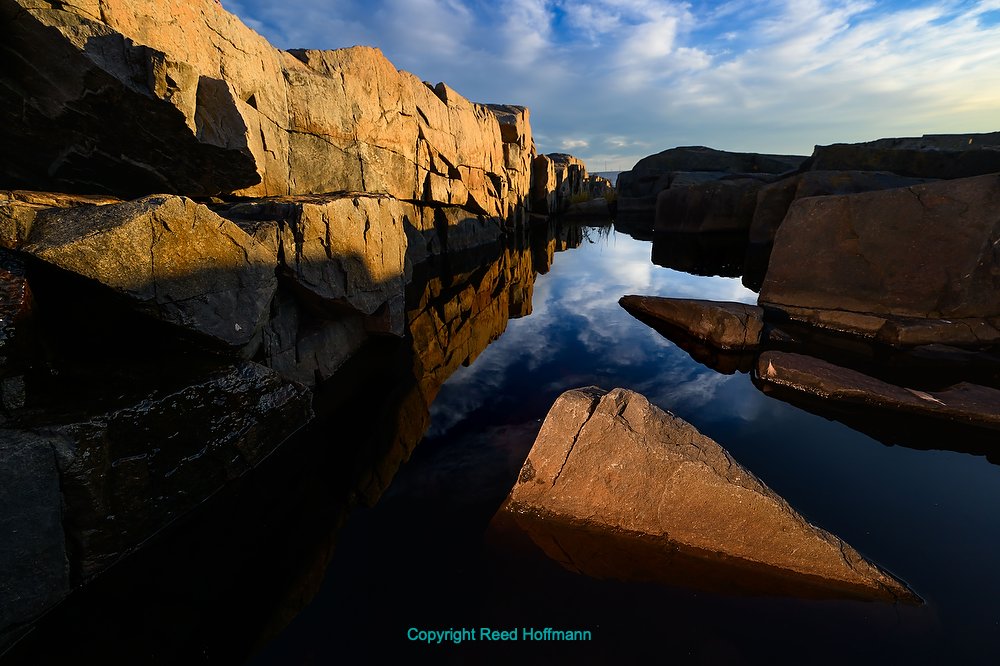
Schoodic Point consists of slabs of rock thate xtend into the Ocean. I like taking groups there late in the day, for sunset, because it’s less crowded and offers some neat photo opportunities, like this rock poking up from a pool of water. I used a flash (Nikon SB-5000, with a light-orange gel), off-camera to the left to illuminate it and sseparate it from the sky’s reflection in the water. People are surprised that I sometimes use a flash in landscape photography, but this picture wouldn’t be possible without that. Nikon Z 8, Manual exposure, Sunny white balance, ISO 200, 1/250 at f/8 in Matrix metering, -0.7 EV, Nikkor Z 14-30mm f/4 S lens at 14mm. Photo copyright Reed Hoffmann.
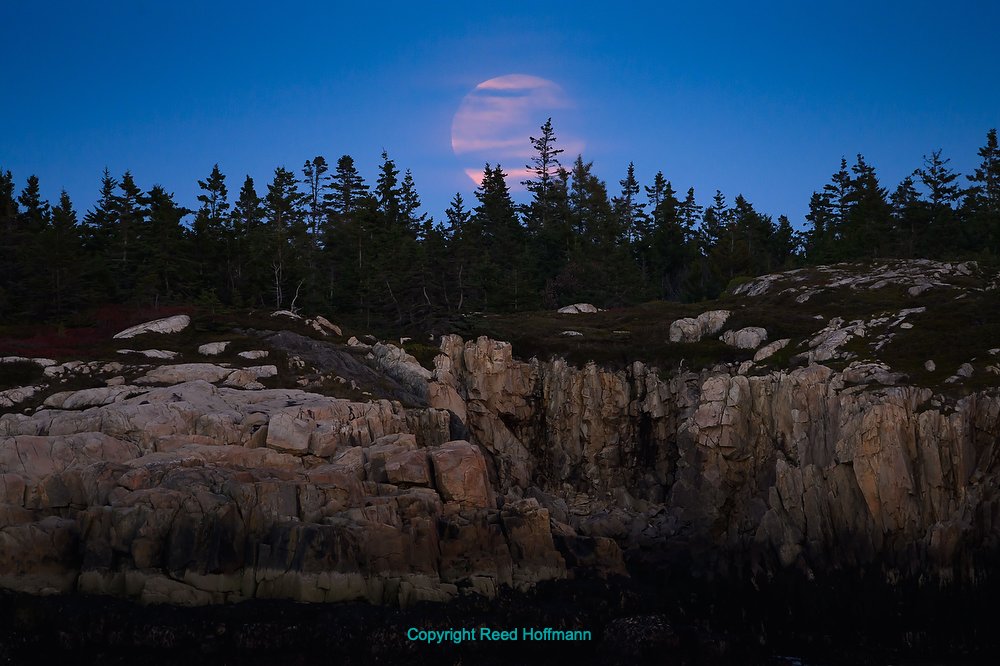
While my group was busy finding pictures among the rocks at Schoodic Point, I spent part of that time scouting for a good spot where we could photograph the Super Moon as it rose above the trees across the water at Little Moose Island. Later, about half the group joined me in returning to that spot to make pictures like this, taken eight minutes after moonrise, at 5:51 p.m. Nikon Z 8, Aperture Priority, Sunny white balance, ISO 800, 1/60 at f/8 in Matrix metering, -0.7 EV, Nikkor Z 28-400mm f/4-8 VR lens at 400mm.
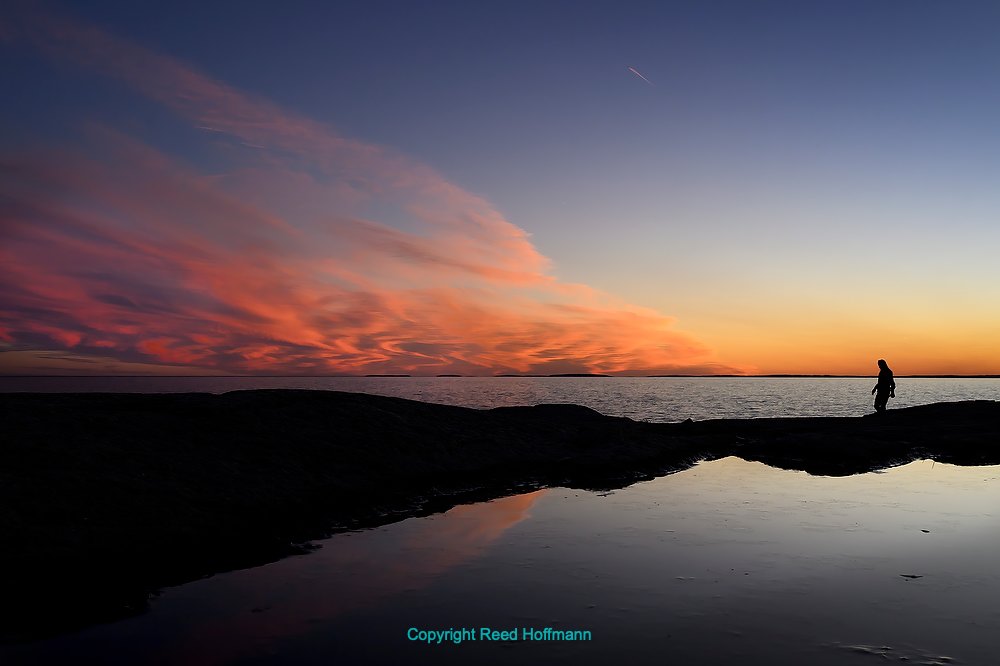
Five minutes later, at 5:56p.m., I’d left the Super Moon to the east and returned to the western view, being rewarded with a beautiful sunset. Nikon Z 8, Aperture Priority, Sunny white balance, ISO 800, 1/200 at f/8 in Matrix metering, -0.7 EV, Nikkor Z 28-400mm f/4-8 VR lens at 28mm.
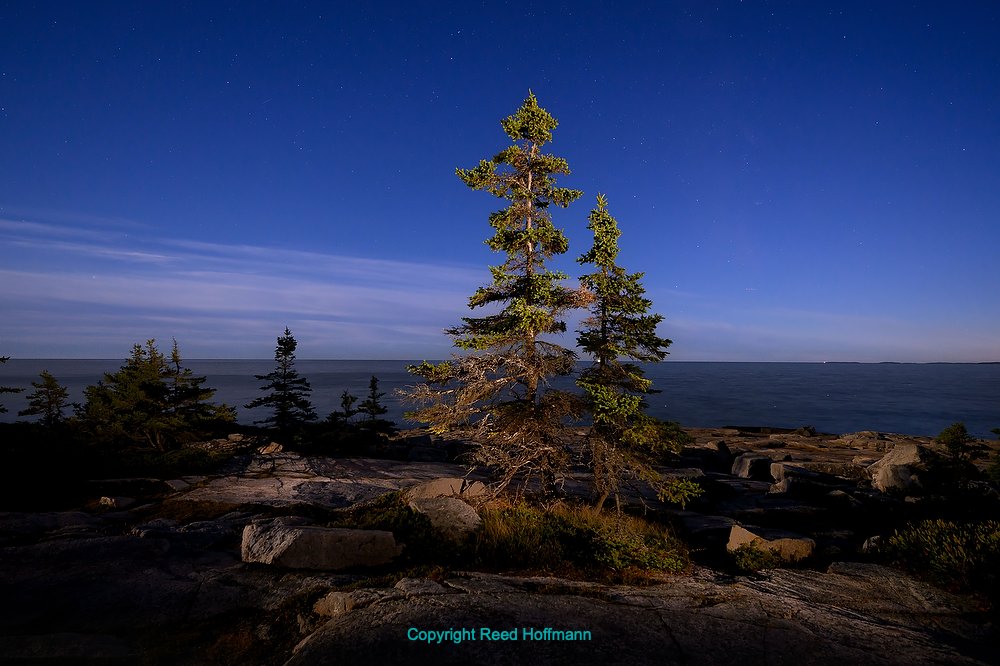
As sunset faded, I went to work setting up a night shot for the group, using three Lume Cubes to light this scene, a technique that’s referred to as “low level lighting.” This was taken just over an hour past sunset, at 6:56pm. Nikon Z 8, Manual exposure, Sunny white balance, ISO 1600, 6-seconds at f/4, Nikkor Z 14-30mm f/4 S lens at 18mm.
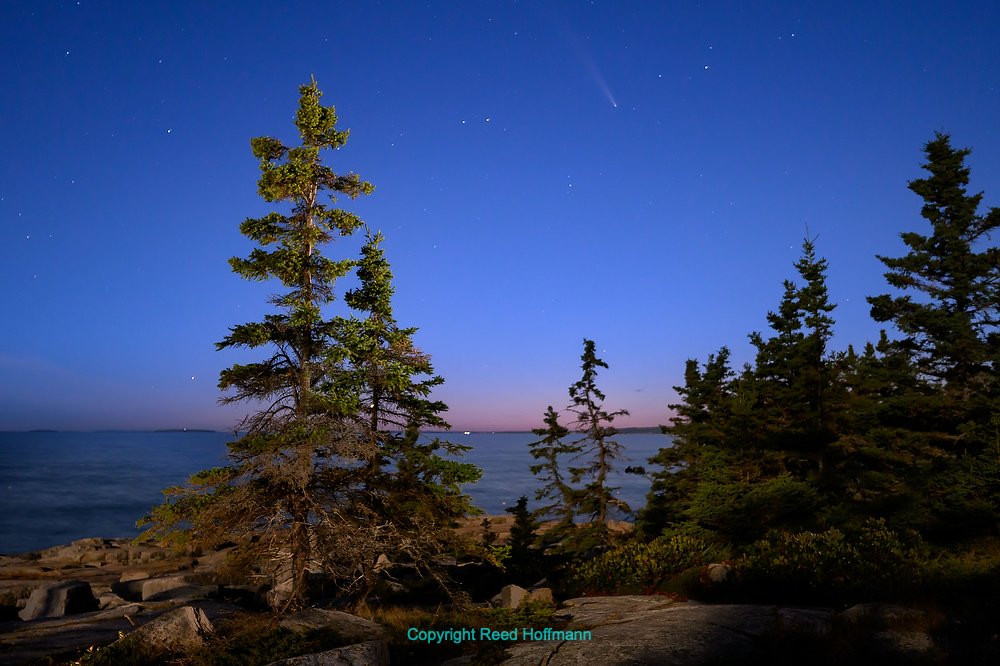
While shooting that scene, one of our group, who’d set up far to the left, noticed that the comet (C/2023 A3, Tsuchinshan-ATLAS) was starting to show in the western sky (thanks Rene!). Two minutes later we’d all either shifted our framing right, or moved our tripods to the left to include the comet. Nikon Z 8, Manual exposure, Sunny white balance, ISO 1600, 6-seconds at f/4, Nikkor Z 14-30mm f/4 S lens at 30mm.
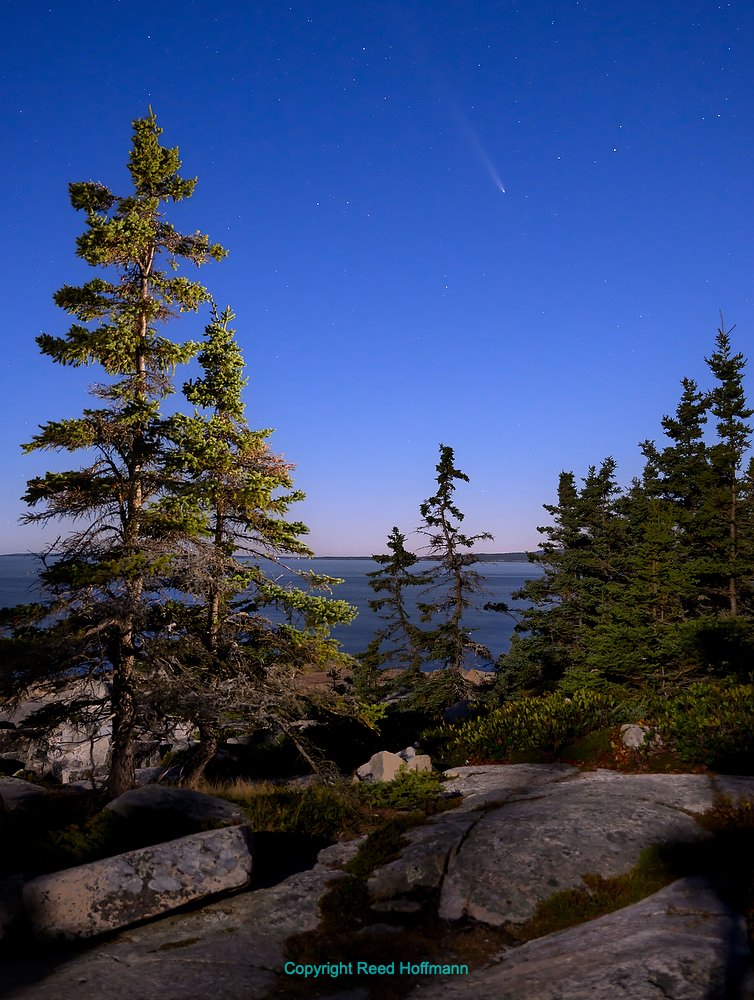
Photographing comets is pretty rare, so a few minutes later I’d moved the lights and then turned my camera 90-degrees to make a vertical picture as well. Nikon Z 8, Manual exposure, Sunny white balance, ISO 2000, 10-seconds at f/5, Nikkor Z 28-400mm f/4-8 VR lens at 35mm.
We had a beautiful evening, plus everyone came away with a rare comet photo. One of the things I love about leading these small-group workshops is that I can change our plans on short notice. And being able to change the plan can give us better odds of making unique pictures. Because, of course, in photography, timing is everything!
(I’ll probably repeat this trip to Acadia, in 2026 if not 2025. If that interests you, drop me a note. And if you’d like to see more photos from the trip, check out the gallery here.)
(If you like this story, please share it with your friends and let them know about the links on photography that I post on my business Facebook page. You can also find my photos on Instagram. And if you’re curious about the workshops I teach, you can find them here. Finally, you can subscribe to this blog on my home page.)

Beautiful photos. So serene
Beautiful photos! Great story!